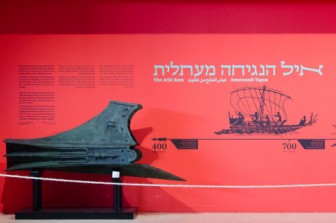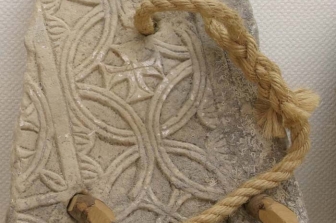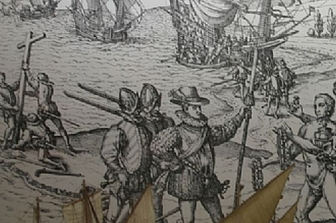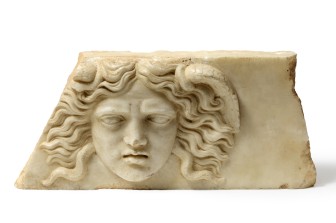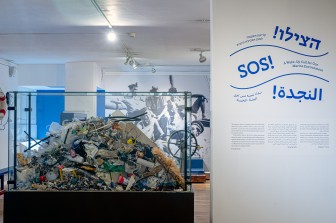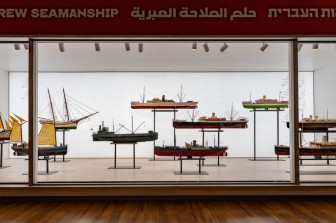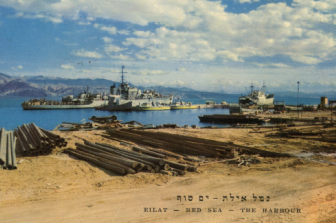Exhibitions
Can you see its beauty
New Exhibition
The exhibition presents an intergenerational dialogue, spanning a hundred years, between Hermann Struck and Gil Goren, emphasizing a common perspective, according to which the power of visual imagery is not merely aesthetic, but political, social and educational as well.
The Athlit Ram
One of the most important and rare discoveries of underwater archaeology in Israel is that of the Athlit ram. It was discovered by the late Yehoshua Ramon in 1980, in the northern bay of Athlit, and was retrieved from the sea by the staff and students of the Maritime Civilizations Department at the Centre for Marine Studies at Haifa University.
Anchors
One of the concerns of seafarers of all times has been how to halt their vessel in mid-ocean when necessary. The first sailors solved the problem by lowering a rock tied to a rope onto the sea-bed.
Ancient Shipping
The lands of the Mediterranean and the Red Sea were always connected with the sea and the rivers. Already in the earliest periods boats traversed the rivers and the coasts of the sea. In these lands was born and developed the art of seafaring, at least as far as the western world is concerned.
The Age of the Maritime Discoveries
During the 15th-16th centuries maritime exploration and colonization reached a peak. It was a decisive phase between the Middle Ages and the beginning of Modern Times.
Gods, Goddesses, and Marine Superheroes
This exhibition presents emblematic figures of gods, goddesses, heroes, and mythical marine creatures from ancient times to the modern era. Maritime trade and seafaring have played a crucial role in shaping cultural exchanges, through which sea-related beliefs and myths evolved and transformed. The vastness of the sea has been an endless source of human imagination - from the mighty gods of the ancient Egyptians, Phoenicians, Greeks, and Romans, through the protective saints of Christianity, to the superheroes of the modern age.
SOS!
This exhibit urges all of us to raise awareness of the rapid ecological destruction taking place in our marine environment. It invites us to join thousands of activists in Israel and worldwide in participating in both small- and large-scale actions in support of the ocean’s ecological health.
SHIPS TELL THEIR STORIES | EARLY HEBREW SEAMANSHIP DURING THE BRITISH MANDATE
The model ships in this display reflect a dramatic and stormy chapter in Jewish marine history during the years before the establishment of the State, and the first few years after its establishment. They demonstrate the progression from sailing ships to modern, motorized ships, and narrate the story of the development of Hebrew seafaring from private and civilian initiatives up to the national projects of Ha’apala, Aliya, and the establishment of an Israeli merchant fleet.
Let’s Build a Port | The Ports of Israel
New Display
Israel’s location along trade routes connecting three continents - Asia, Africa, and Europe - has given its ports historical significance. Until the early twentieth century, the ports of Jaffa and Acre were the country’s main ports, serving as gateways for passengers and cargo. These ports developed over thousands of years as organic parts of their cities, similar to other historical ports along the Mediterranean.


